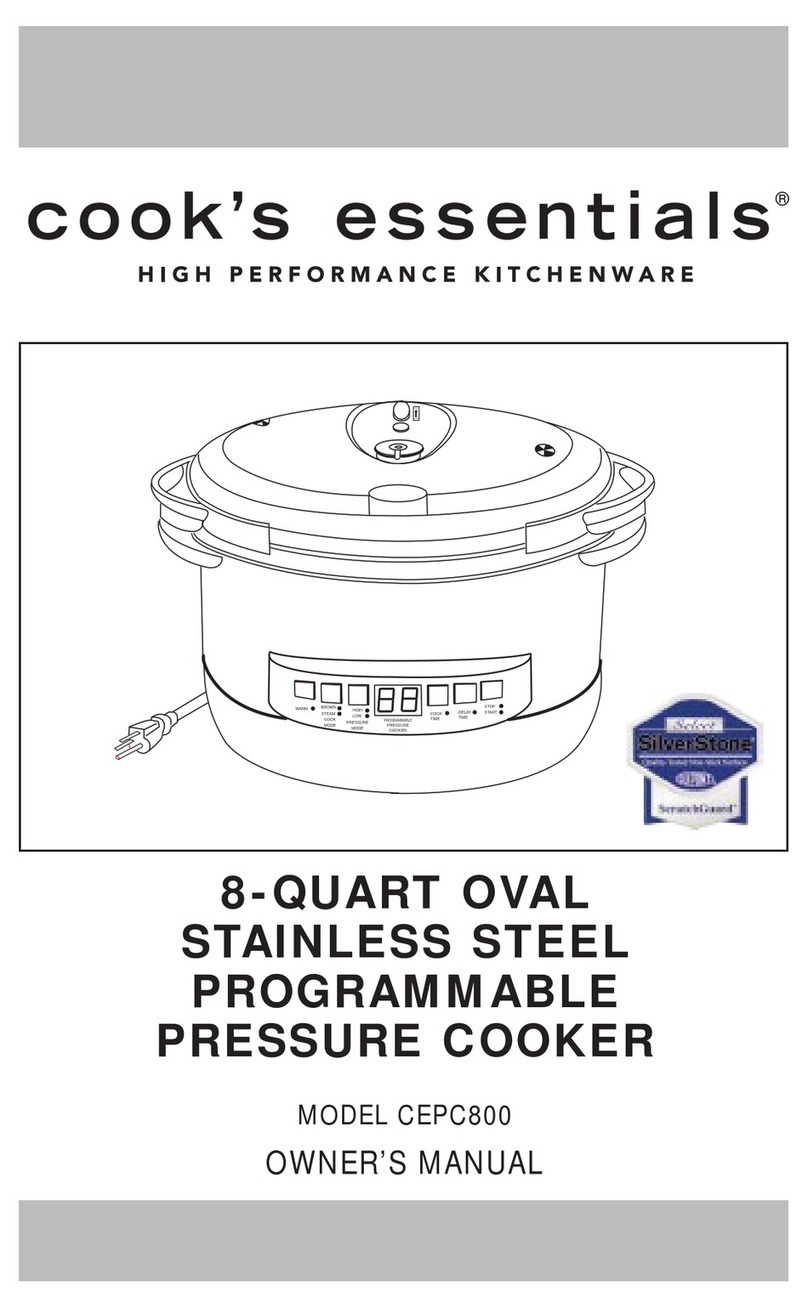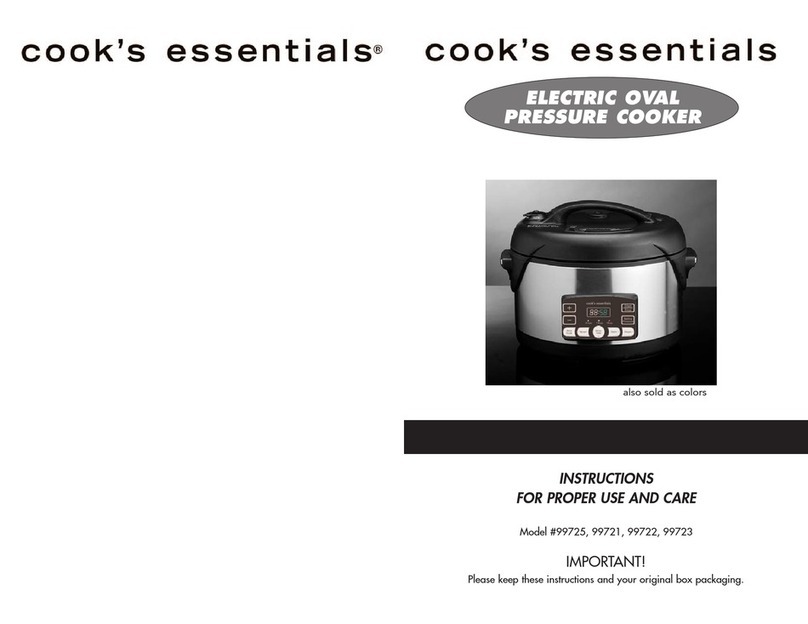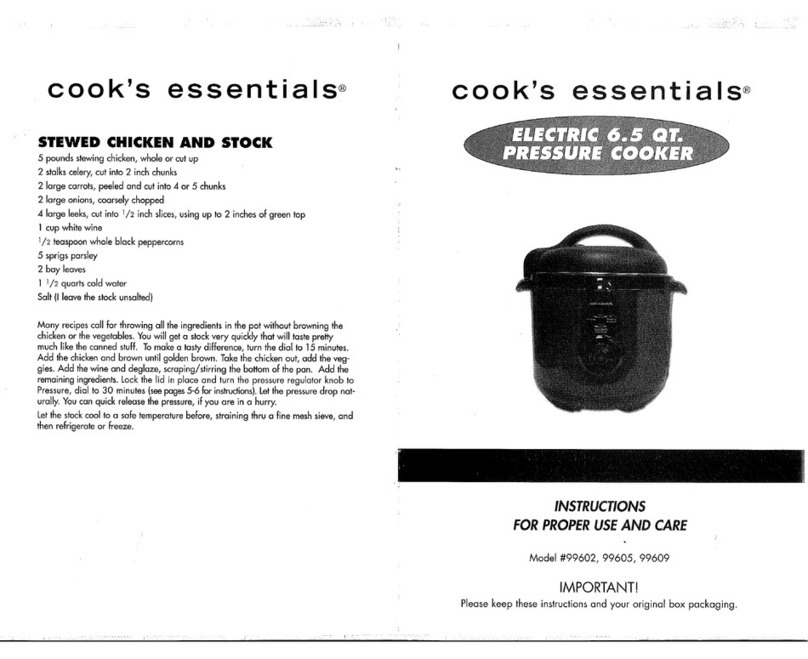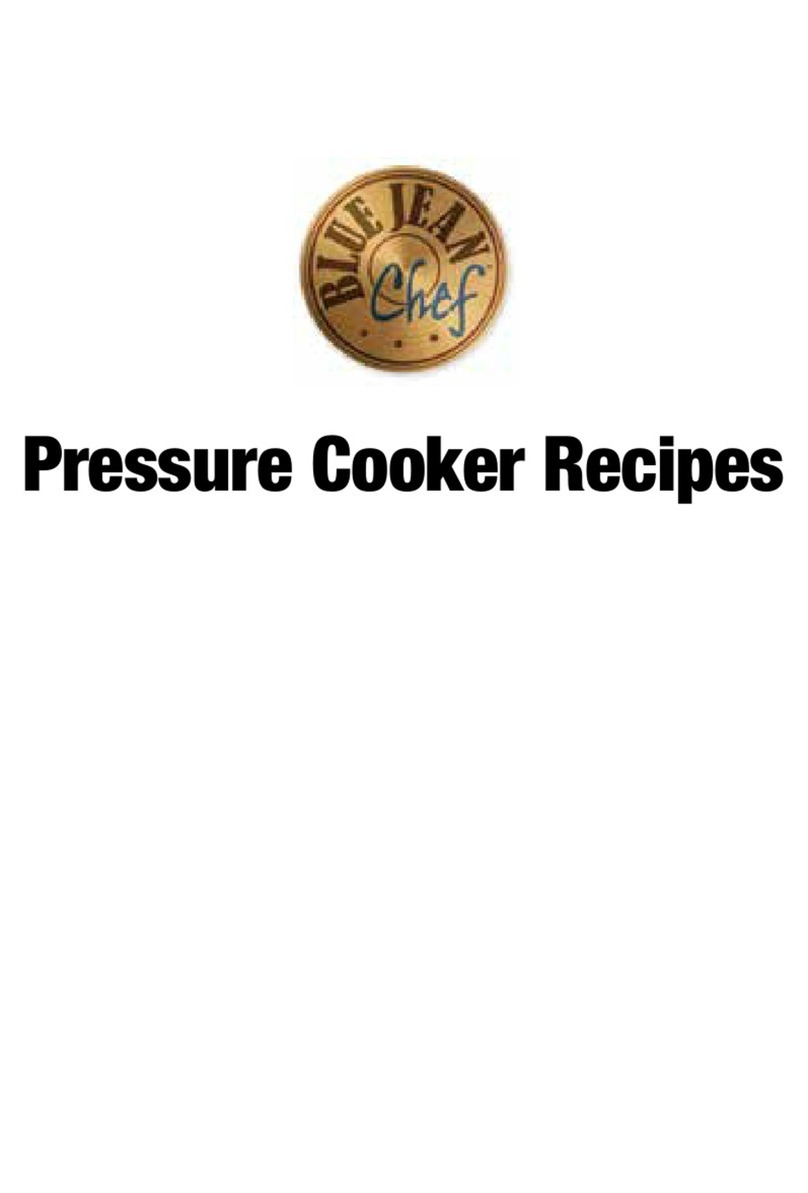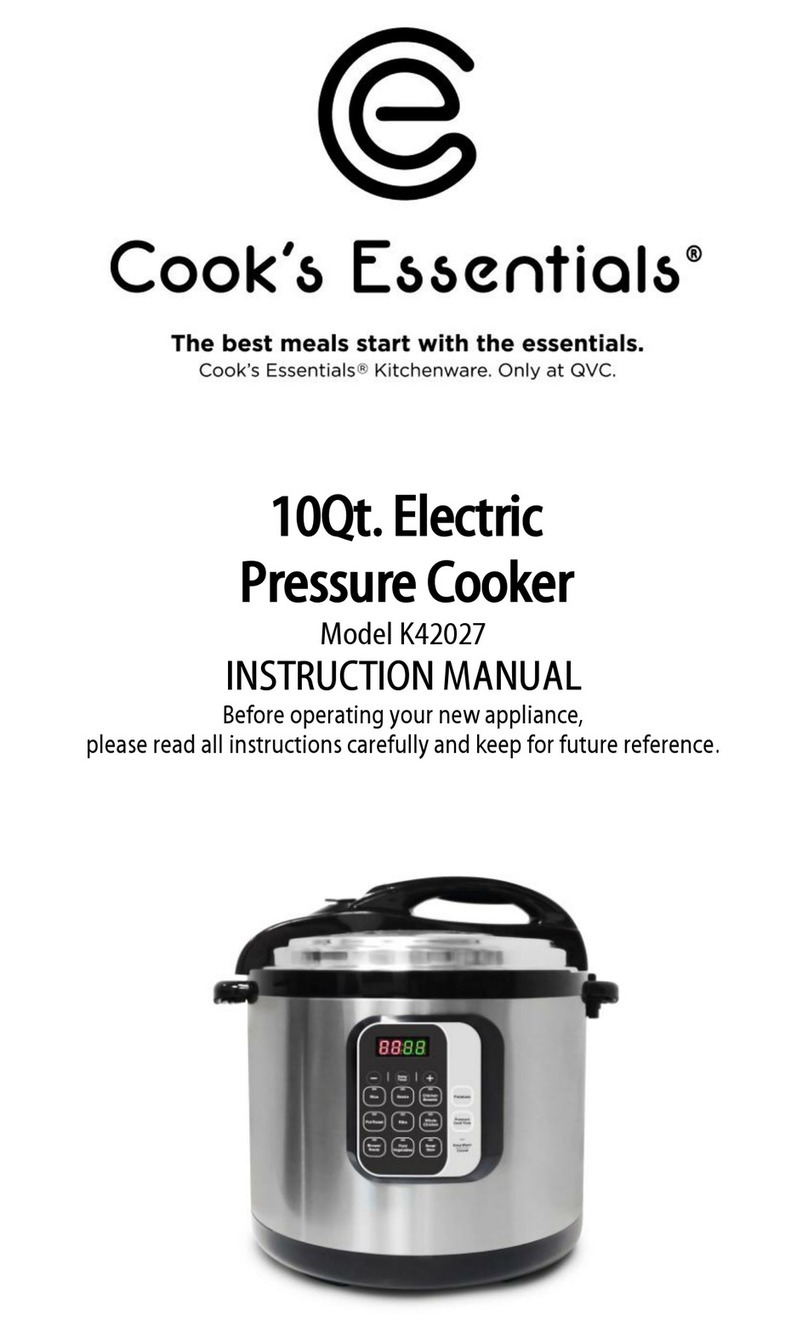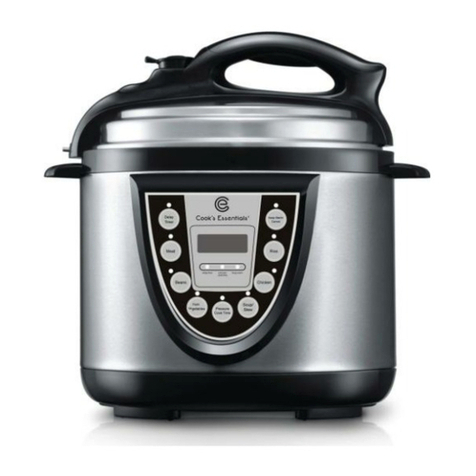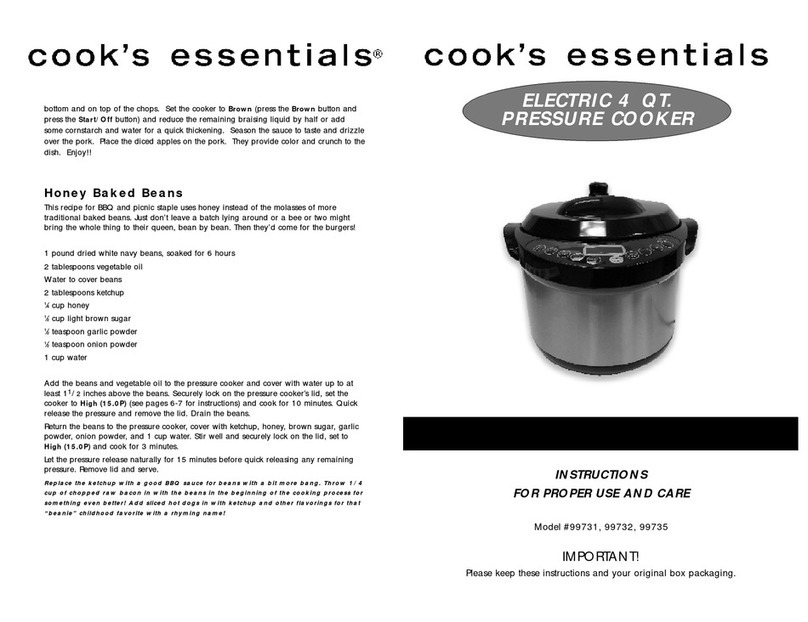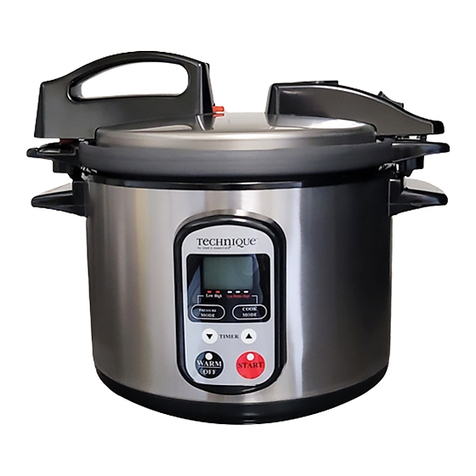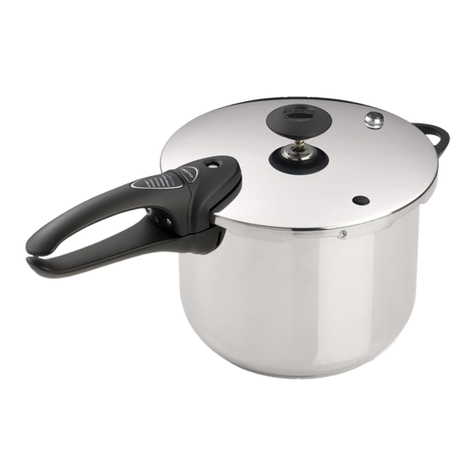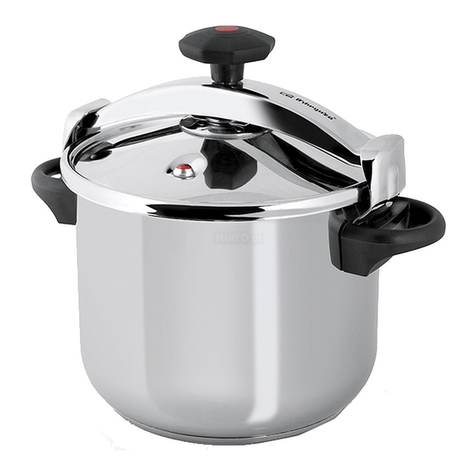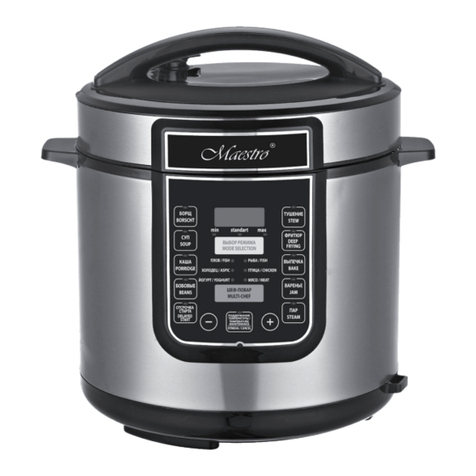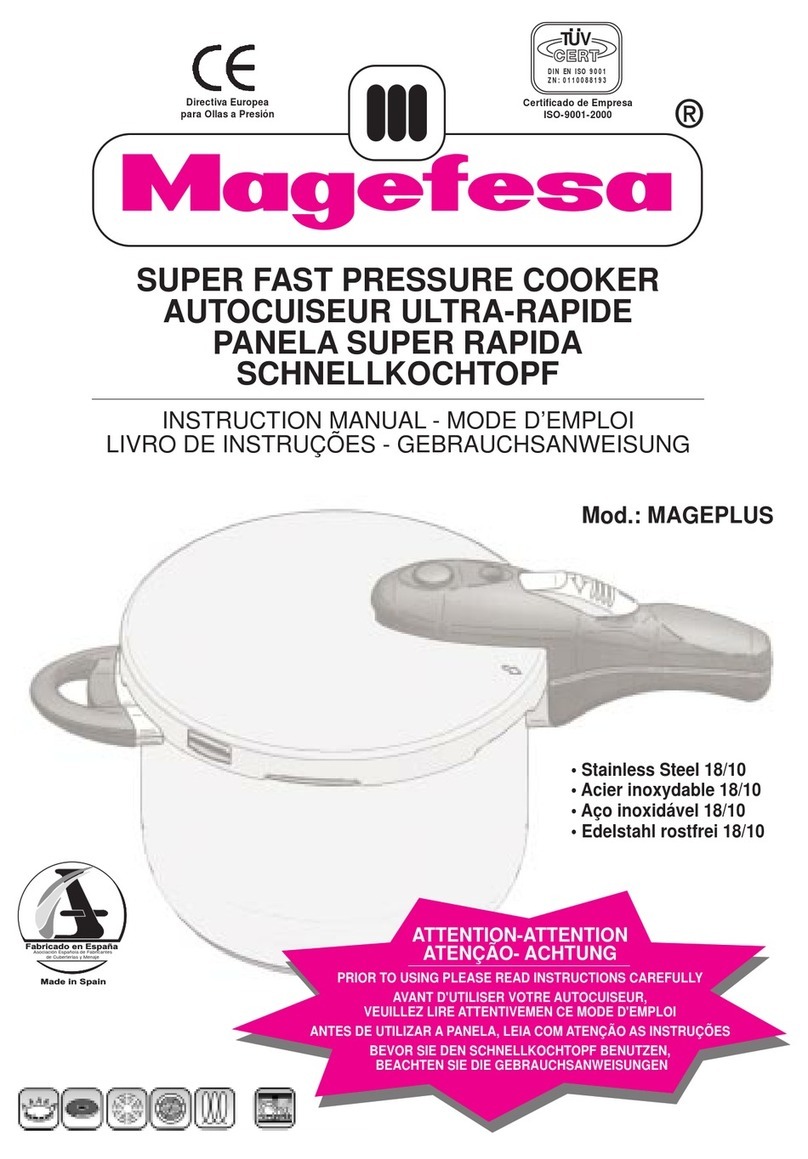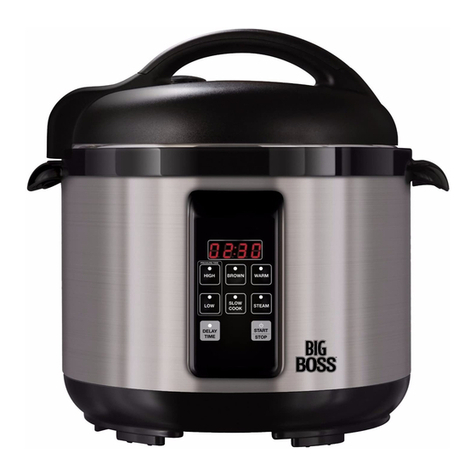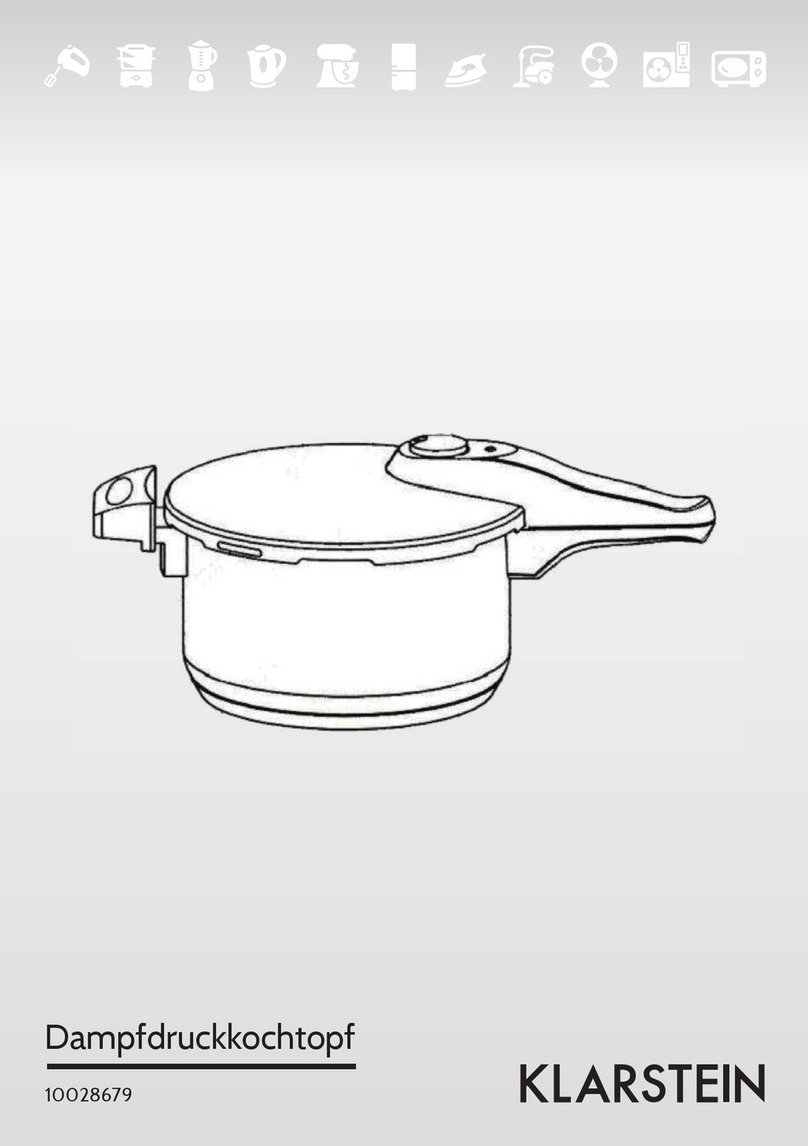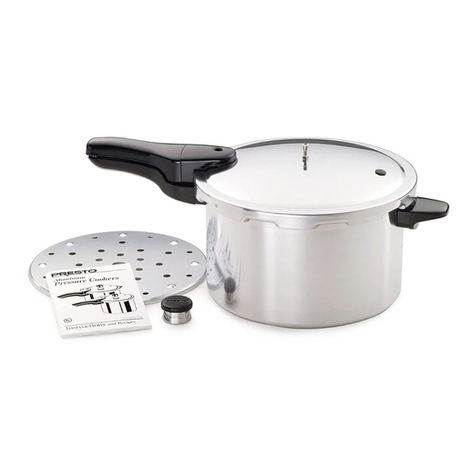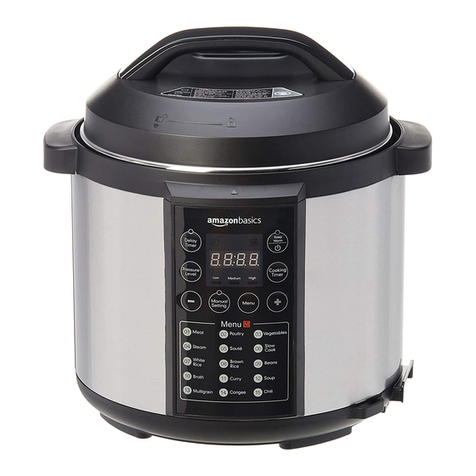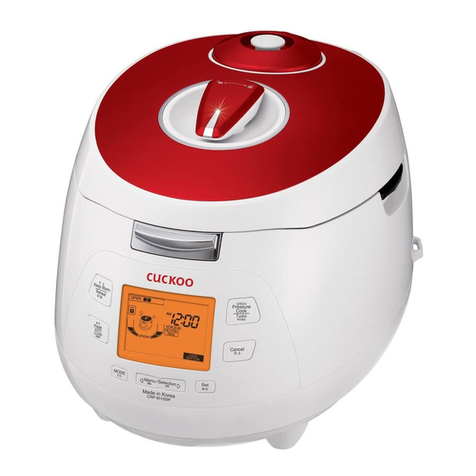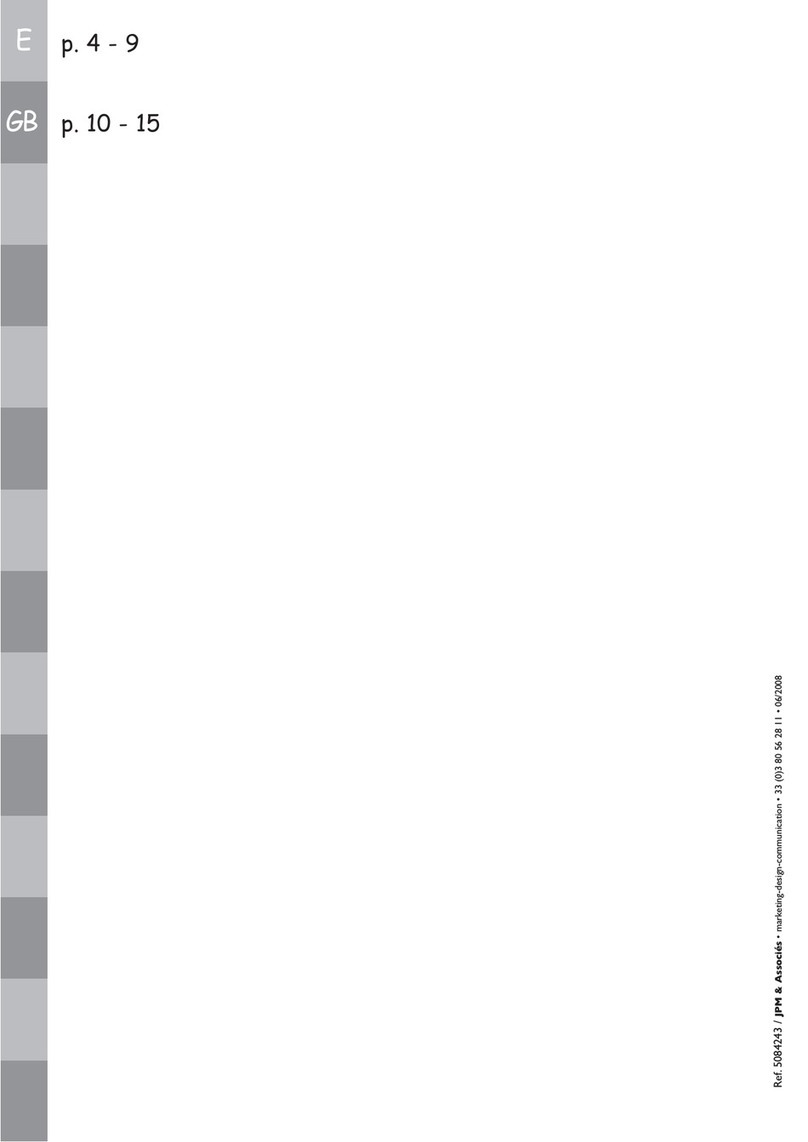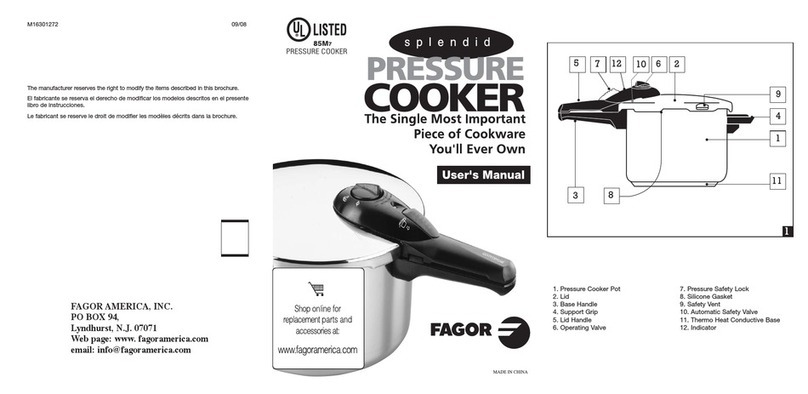
IMPORTANT SAFEGUARDS
When using pressure cookers, basic safety precautions should always be followed:
1. Read all instructions before operation.
2. Do not touch hot surfaces. Use handles or knobs and a potholder.
3. This appliance should not be used by or near children or individuals with
certain disabilities.
4. NEVER ATTEMPT TO OPEN LID WHILE THE UNIT IS OPERATING. Do not open the
pressure cooker until the unit has cooled and all internal pressure has been released.
If lid is difficult to rotate, this indicates that the cooker is still pressurized. Do not
force it to open. Any pressure in the cooker can be hazardous. See "OPERATING
INSTRUCTIONS" section in this manual.
5. Do not place the pressure cooker in a heated oven or on any stovetop.
6. Extreme caution must be used when moving a pressure cooker containing hot
liquids.
7. Do not use pressure cooker for other than intended use.
8. This appliance cooks under pressure. Improper use may result in scalding injury.
Make certain unit is properly closed before operating. See "INSTRUCTIONS FOR USE"
section in this manual.
9. To protect against electrical shock, do not immerse cord, plugs, or outer vessel in
water or other liquids.
10. Do not fill unit over 2/3 full. When cooking foods that expand during cooking such
as rice, legumes, beans, or dried vegetables, do not fill the unit over 1/2 full.
Overfilling may cause a risk of clogging the pressure limiting valve and developing
excess pressure. Failure to follow this procedure can result in injury to person(s)
and/or damage to the unit. See "INSTRUCTIONS FOR USE" section in this manual.
11. Be aware that certain foods, such as applesauce, cranberries, pearl barley, oatmeal
or other cereals, split peas, noodles, macaroni, rhubarb, or spaghetti can foam, froth,
and sputter, and clog the pressure release device (steam vent). These foods should
not be cooked in a pressure cooker unless following a Maxi-Matic® approved
pressure cooker recipe.
12. Always check the pressure release devices for clogging before use.
13. Do not use this pressure cooker for pressure frying oil.
14. DO NOT tamper with the Steel Ring in the Lid (2) with any tools or external forces. If
the Steel Ring is damaged, please stop using immediately and replace the Lid.
15. Clean the Filter (17) regularly to keep the cooker clean.
16. NEVER use additional weight on the Pressure Limiting Valve (3) or replace the
Pressure Limiting Valve (3) with anything not intended for use with this unit.
17. The surface of contact between the Inner Pot (6) and the Electronic Heater (14)
should always be clean. DO NOT use the Inner Pot with other heating sources. DO
NOT replace the Inner Pot with a container other than what is recommended by the
manufacturer.
18. The Inner Pot consists of a non-stick layer surface. To avoid scratching the non-stick
surface, please use wooden or plastic utensils.
19. Unplug from outlet when not in use and before cleaning. Allow to cool before
putting on or removing parts.
